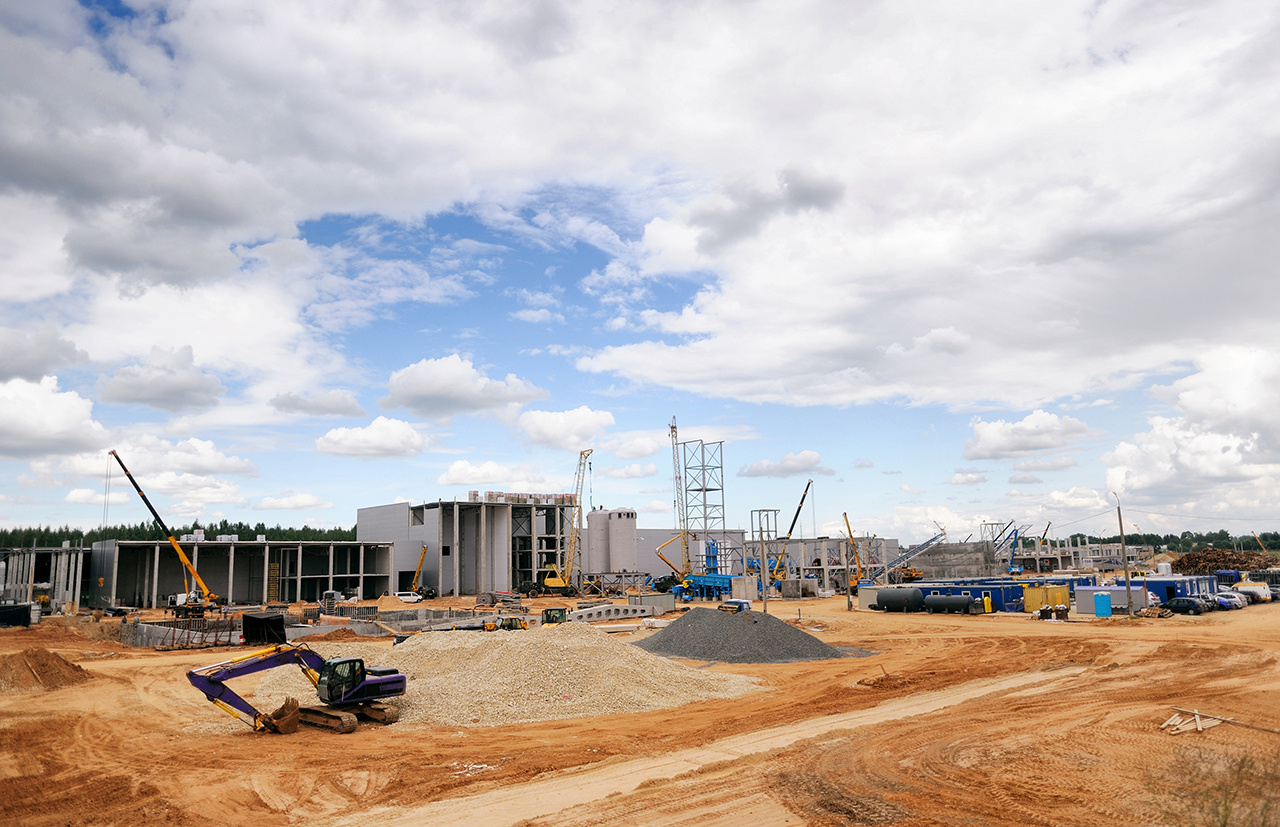How to achieve effective dust control in construction sites

Constructions sites of all sizes and types pose a unique set of dust control challenges. There are numerous ways dust can be generated and each dust generation point needs to be dealt with separately.
Whenever earth is being pushed around by dozers and graders, the bare earth will inevitably start blowing around in the wind, causing dust and other contaminants to become air borne.
At larger construction sites, unsealed dirt roads are an obvious and major contributor to dust.
Additionally, stockpiles of fine materials such as soil are also subject to erosion and wind.
All of this dust needs to be dealt with for a variety of reasons. Air borne dust can affect the health of workers as well as cause visibility issues for neighbouring communities. Governing bodies such as Local Councils and the EPA naturally become concerned if such issues arise.
The traditional solution for dust control, especially at construction sites, is to use water carts to spray surfaces or materials with water in order prevent dust becoming air borne.
However, as many site managers will know first-hand, water carts are not only expensive to use but they cause more problems in the long run.
In this article, we’ll take a look at how to achieve a more cost-efficient and effective solution to dust control at construction sites.
Why water alone just won’t cut it

While water carts have long been the go-to solution of dust control, there are significant drawbacks to using this approach alone.
Purchasing water is expensive when compared to the short-term effectiveness the water carts actually achieve. Areas treated with water carts will only remain wet for so long before they need to be sprayed again. Operating and labour costs are therefore increased whilst productivity decreases.
Water carts also create problems with run-off and mud which in turn creates safety issues for workers and vehicles.
The issue of mud can be amplified if there are 3rd party trucks driving on and off the construction site. Local Councils will often impose penalties when large amounts of mud are tracked onto public roads from the tyres of these trucks.
The overall effectiveness of using water in preventing air borne dust particles is low compared to other alternatives. Water has a very high surface tension, making it difficult for individual water droplets to actually bind with dust particles. This leaves dust particles much more prone to becoming air borne.
Thankfully, there are more effective and cost-efficient dust control solutions available for construction sites.
Additives are the answer

Specially formulated polymer based additives can be used to improve the performance of water carts.
These additives are designed to create a protective seal or “crust” over the exposed surface or stockpile. This crust effectively prevents dust from becoming airborne when the sprayed area is exposed to wind, rain and even truck tyres.
Dust-A-Side Australia has developed a range of polymer based additives which deliver improved dust reduction compared to water alone. The use of these additives also reduces high operating costs associated with water carts.
There are two additives from the range that are particularly well suited to construction site applications – HydroTac and AquaTarp.
Let’s take a quick look at how each of these products work to deliver improved dust control.
HydroTac
HydroTac is a biodegradable binder used to bind surface particles together. A hygroscopic crusting agent, this dust control product is highly effective in containing fugitive dust throughout construction sites.
It can be used diluted in water carts and sprayed on temporary roads and other exposed surfaces.
Treated areas are immediately trafficable after application, making it the product of choice for construction sites large and small.
Totally organic, it has no corrosive chloride compounds and is readily biodegradable and therefore environmentally friendly. HydroTac is ideally used in short term applications.
AquaTarp
AquaTarp is a solvent-free, water and surfactant based emulsion of latex polymer. The presence of acrylic matter in the AquaTarp formulation helps to bind fine dust particles that can quickly become airborne at the slightest breeze.
When sprayed onto material surfaces, the crusting effect of the product produces a surface seal which exhibits extremely good wind and water erosion resistance. AquaTarp also prevents dust particles from being emitted into the atmosphere as well as sediment run-off.
Normally clear, it can also be supplied with a green-dye additive to aid control of spray coverage. AquaTarp is ideally used in longer terms applications and is especially effective for use on stockpiles, lasting for up to 12 months if the material underneath the spray is stable.
Benefits of Dust-A-Side Australia’s polymer based additives
Both AquaTarp and HydroTac deliver substantial benefits in terms of dust control and cost savings, including:
- Operational dust reductions of over 70%
- Water savings of over 50%
- Operational cost savings and efficiencies due to a reduction in water cart operating hours of more than 50%
- Reduced sediment run-off and surface erosion
- Safer operations due to improved visibility and reduced likelihood of a vehicle losing control as a result of over watering
While both highly effective, the specific conditions of a construction site always need to be considered in order to determine which solution, or combination of solutions, will be most suitable.
Want to learn more about effective dust control for your construction site?
To learn more about AquaTarp, HydroTac and our other dust control solutions, contact the experts at Dust-A-Side Australia today.
We’ll happily supply you with an obligation-free report to design a dust control solution tailored specifically to your construction site.
Call us now on 1800 662 387 or simply click here to contact us.



